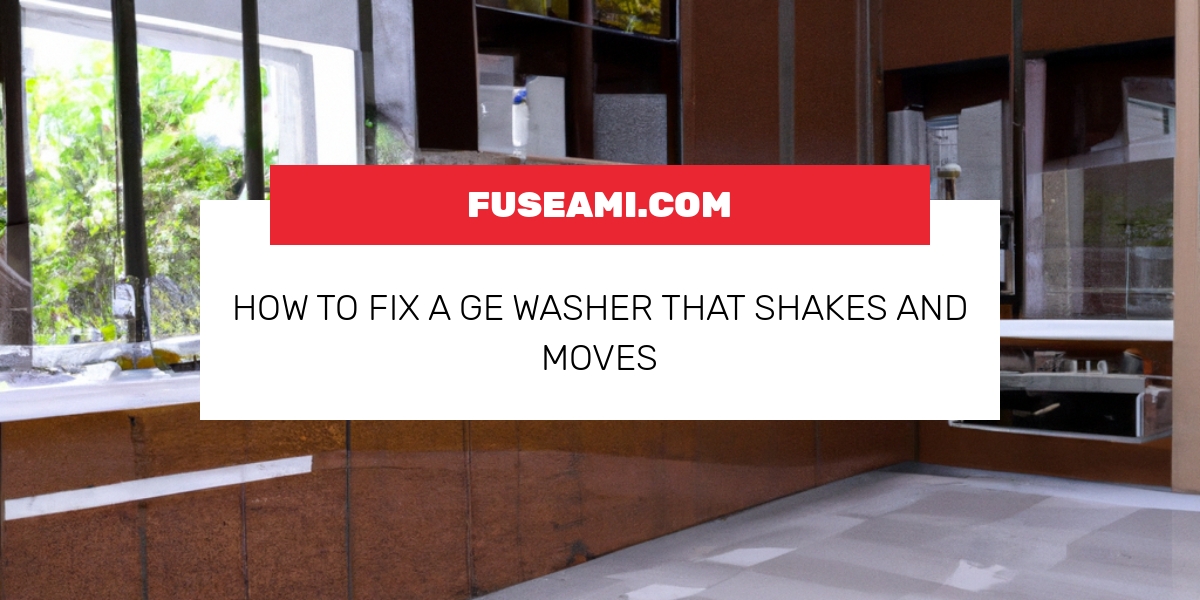Shock Absorber
Shock absorbers are used in front-load GE washing machines to dampen tub movement throughout the spin cycle. To access the shock absorbers, or struts you’ll have remove the rear or front panels. Unbalanced loads can cause washers to shake or move as well as shock absorbers that are weak or damaged will make the machine make an ear-splitting sound during spin cycles. It is imperative to fix the issue right away. How to test the shock absorbers on a GE washing machine.
- Before you start washing your clothes, disconnect it.
- Locate the shock absorbers. Based on the model, it is necessary to remove either the rear or front panel.
- Check shock absorbers for damaged attachments, weak dampening actions or leaks.
- You will need to replace the shock absorbers If you are experiencing any of the symptoms. Both shocks should be replaced at the same time.
Suspension Spring & Tub Spring
Suspension springs and tub springs in your GE washing machine are used to stabilize or suspend your tub assembly from the base. They absorb and block out vibrations produced by the spin cycles of the GE washing machine. Sometimes, these springs can become bent, damaged or broken and cause excessive noise and vibration during the spin cycle. How do you inspect the suspension spring of a washer
- Before you begin, switch off the power source.
- Remove the front or top part of the washer to gain access to the springs that support it.
- Inspect the springs for damage or stretching and ensure they are secured at both ends. Replace springs already in tension. It is important to wear protective clothing.
- Replacement suspension springs are necessary in the event of any stretch, injury, or wear. If you spot any suspension springs not working properly, we would recommend replacing them all at once. They wear at approximately the same pace.
Snubber Ring & Damper Pad & Tube Wear Pads
A snubber rings is an element that helps to dampen the machine’s vibrations during spin cycles. They are typically found at the bottom of the machine and is used as a cushion the tub support and base. The majority of tub wear pads as well as snubber rings are constructed from hard plastic. However, some damper pads may be made from lubricated felt. Each design will eventually wear down and the tub will move too much. They could also wear down to the point where the tub supports touch the bottom of the washer. In these instances the washer can shake out of control. How to inspect a damper pad in your GE washing machine:
- Remove the front panel of the washer by unplugging it.
- Find and examine the snubber. To examine the snubber you will need to take off the tub springs.
- Check for white dust in or around the plastic style snubber. Be on the lookout for dried or dislodged pad material when using the felt type.
- You will need an Nubber Ring replacement when you encounter any of these symptoms.
Tub Dampening Strap
Top-load washers that have tub dampening straps can be used to help cushion the tub’s movements during spin cycles. The tub’s top as well as each corner of the cabinet is secured by four straps. The normal use of the tub can result in the straps’ rubber to wear out. The tub can come into contact with the cabinet while spinning when the straps are stretched or damaged. The washer shakes and move quickly, creating a banging sound. Excessive use and large loads will cause strain to the straps and cause premature failure. How do you check the buckles that dampen the tub of GE washing machines.
- The first step is to unplug the washer. Next, open the cabinet to find the tub dampening straps.
- Each strap will attach to the tub, and one corner of the cabinet. Examine the tub dampening straps carefully for wear, fraying or damage.
- You will need four replacement tub dampening straps if you notice any of these signs. Since they wear out at about the same rate that is why it is advised to replace all four straps immediately.
Support Leg for the washer
The legs for leveling the washer serve to support it. It is possible to adjust them so they can be leveled. Some models come with four threaded legs whereas others come with two and two legs that self-level. If your GE washing machine vibrates or shakes during the spin cycle, you should ensure it is properly seated and level on all four legs. What are the steps to inspect the leveling legs of a GE washing machine?
- While this repair isn’t a requirement for dismantling the appliance, we would recommend you disconnect the appliance prior to beginning.
- To get to the feet, tilt the washer machine on its side or to the back.
- Start by making sure that all leveling feet are level. If you discover that one of the leveling feet are not level, you can run a test cycle. If the issue continues, check for signs of wear and damage to the feet, and ensure they are properly threaded. If you are experiencing any of these problems, Replacement leveling feet may be necessary.



